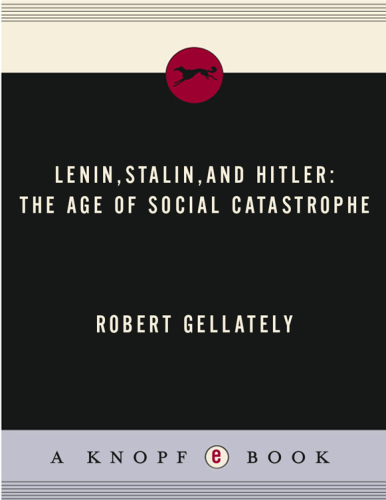
Lenin, Stalin, and Hitler
The Age of Social Catastrophe
کتاب های مرتبط
- اطلاعات
- نقد و بررسی
- دیدگاه کاربران
نقد و بررسی

May 28, 2007
Historian Gellately's (Backing Hitler: Consent and Coercion in Nazi Germany
) new work insists on Lenin's inclusion in any effort to understand the two major and deadly dictatorships of 20th-century Europe, Soviet communism and Nazism. Every horrendous act of the Stalin era had been seeded by Lenin, the author argues. Moreover, the Soviet and Nazi systems developed in tandem, each carefully eying the other, learning from each other, as they both reached an apex of brutality and terror. In developing this analysis, Gellately provides informed but somewhat plodding accounts of the two systems. Not all of the arguments stand up to scrutiny. “In the 1930s, the struggle between Communism and Nazism became a deadly rivalry for world domination,” the author writes. But in the 1930s Stalin cared for little beyond the Soviet Union and was hardly bent on global conquest. Gellately's approach is relentlessly one-sided in its focus on ideology as the causative factor in history. Even the civil war that followed the Bolshevik revolution is treated as backdrop for the implementation of ideology, rather than as an earthquake-like event that well into the 1950s shaped the thinking of Soviet leaders. Gellately is better on the Third Reich, but overall this is an unsatisfying and uninspired history. 16 pages of photos.

August 1, 2007
A historian of Nazi Germany (Backing Hitler, 2001), Gellatelyhere compares it toits totalitarian enemy, Soviet communism. At pains to distinguish the two dictatorships both ideologically and bytheir political support, Gellately reviews their roots in the rubble of World War I. Underscoring Lenins contempt for liberal democracy and dedication to mass violence, the author argues that Leninism had a logical continuator in Stalinwhich, while not an original thesis, is one that Gellately capably sustains. Switching to Germany and the radically anti-Semitic nationalist resentments from which Hitler emerged, the author tracks events in the Nazi ascent to power and stresses the popularity Hitler had acquired by the late 1930s. Having poised historybefore what became the Holocaust, Gellately, as part of his argument for the uniqueness of the Holocaust, however similar numerically itwas to Stalins death tolls, details the menaces in Hitlers rhetoric, such as his notorious 1939 prophecy of Jewish annihilation in the event of war. But discussing either tyrant, Gellately achieves his aim of describing for general readers the draconian inhumanity of their rules.(Reprinted with permission of Booklist, copyright 2007, American Library Association.)

























دیدگاه کاربران